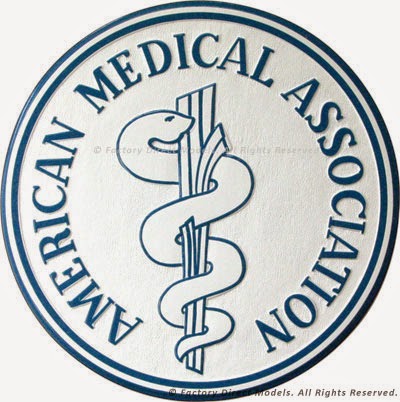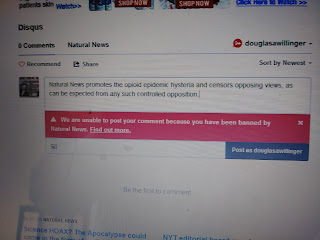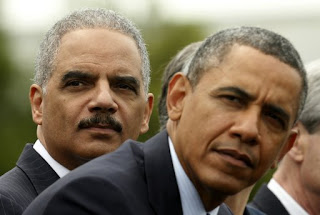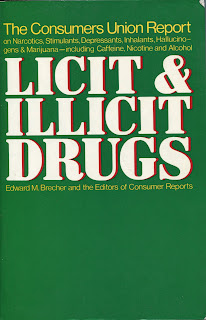The AMA Needs To be Sued For Criminal Racketeering- Ripping Off The Public
Supports the 'drug war' perversion of useful natural substances into concentrated poisons, lying through their teeth about Cannabis, and the massive violations of human rights for its criminal mercantilism on behalf of synthetic patentable chemical quackery
Medical Control, Medical Corruption
By Llewellyn H. Rockwell Jr.
http://www.lewrockwell.com/1970/01/lew-rockwell/medical-control-medical-corruption/
This article appeared in the June 1994 issue of Chronicles.
The vested interests are sick over it: Americans are beginning, just slightly, to take charge of their own health care. Such best-sellers as the Doctor’s Book of Home Remedies, the Physician’s Desk Reference, and the Merck Manual can keep you out of the doctor’s appropriately named waiting room, or at least help you understand what is being done to you, when an apple a day does not work.
Who is unhappy with this increased knowledge? The American Medical Association, which for almost 150 years has sought to institutionalize a rip-off and to keep sick people and their families oblivious to it. Thanks to this central committee of the medical cartel, the number of medical schools and medical students is drastically restricted, state licensure further obstructs the supply of doctors, fees are largely secret and controlled across the industry, alternative treatments and practitioners are outlawed, pharmacists and nurses are hamstrung, and the mystique of the profession rivals the priesthood, although priests have a somewhat lower income. Meanwhile, the customer pays through the nose, even if he does not go to an otolaryngologist.
Medicaid and Medicare have contributed to the problem, but the medical cartel is the original sin. Through its ability to keep incomes high by limiting supply and outlawing competition, organized medicine has punished its customers, although the word is never used so as to disguise what is, after all, an economic relationship.
Hillary Clinton’s proposed merger of the medical cartel and the state seems like a radical move, and it is. It is also the logical next step in the partnership of government and medicine. That is why, in addition to opposing Hillary hammer and tongs, we should reexamine the AMA’s distortion of the medical marketplace and the very idea of medical licensure.
Competition among providers — as with any service in a market economy — leads to rational pricing and maximum consumer choice. But this is exactly what the AMA has always sought to prevent. The American Medical Association, organized in New York in 1848, advanced two seemingly innocent propositions in its early days: that all doctors should have a “suitable education” and that a “uniform elevated standard of requirements for the degree of M.D. should be adopted by all medical schools in the U.S.” These were part of the AMA’s real program, which was openly discussed at its conventions and in the medical journals: to secure a government-enforced medical monopoly and high incomes for mainstream doctors.
Membership in the new organization was open only to “regular” physicians, whose therapies were based on the “best system of physiology and pathology, as taught in the best schools in Europe and America.” The public had a different view, however. Official treatments of the time, such as bloodletting and mercury poisoning, harmed and sometimes murdered patients, causing mass outrage.
Emphatically not included among the “best” were the homeopaths. Homeopathy, a less invasive system that still thrives in Britain and Europe, may have done no good, but that was the worst charge lodged against it. Homeopathy did not kill people, as Orthodox medicine did. The homeopaths actually followed the Hippocratic injunction “First, do not harm” and refused to worship abstract Science. As a result, the clergy — an important interest group in 19th-century America — sympathized with them. As the president of the New York State Medical Society noted in 1844, “We feel severely the influence of the clergy as operating against our collective interest.” One prominent pastor, for example, had called the medical establishment “an expensive vampire upon society.”
How the “regulars” came to crush the homeopaths and other competitors, and penalize patients in the process, is a story of deception and manipulation, of industry self-interest and state power. The organized regulars or allopaths first set out to demonstrate that the homeopaths were ill-educated and therefore should be shunned, but that was difficult to substantiate because most of them were converts from orthodox medicine.
One was William H. Holcombe. When he graduated from the University of Pennsylvania, he worried, as he wrote in his memoirs, that physicians “were blind men, striking in the dark at the disease or the patient-lucky if [we] killed the malady [instead of] the man.” One day Holcombe was called by the parents of a seriously ill child, whom Holcombe subsequently set about to bleed. Bloodletting was considered especially important for children, and the younger the child, the more blood was to be drawn. But the mother clutched the baby to her breast and cried, “The blood is the life — it shall not be taken away.” When the benighted father agreed, Holcombe “explained to him candidly, and with some display of professional dignity, that my opinion was worth more than his or his wife’s.”
Holcombe left and returned the next day, expecting to find a dead baby. Instead, the child — who had been treated by a homeopath — was playing in the yard. Holcombe later wrote that “after having blistered, bled, and drugged my patients for twenty-seven years, I determined to find some more humane mode.” He was charged with violating “medical ethics,” whose first principle was: “A physician … should cautiously guard against whatever may injure the general respectability of his profession.”
Eventually, homeopathy became almost as popular as allopathy, especially in the Northeast and Midwest. Many business leaders favored it and funded free dispensaries for the poor. This was made possible by the free market. From the early part of the century until 1850, state laws interfering in medical practice were gradually repealed. The AMA was founded to reverse the trend.
New York, for example, got rid of nearly all of its criminal legislation regarding medicine, forbidding only malpractice and immoral conduct by physicians. As one state senator said, “The people of this state have been bled long enough in their bodies and pockets.” He called on them to demand medical freedom, in the tradition of “the men of the Revolution.”
Most Americans were interested in non-orthodox treatments and believed they should be allowed to compete in the marketplace. Organized medicine claimed people were being fooled. But as Harris Livermore Coulter explains in his extraordinary 1969 study of the AMA’s founding, “People were deserting orthodox medicine … not out of ignorance, but out of knowledge of regular practice and consequent dislike of it.”
An 1848 AMA convention speaker laughed at the “mass of the community” who thought there was “a wide difference” between a physician’s “Apothecary Medicine and our native medical plants.” The first “they regard as almost uniformly poisonous — the other, as harmless and healthful.” He called this “an absurd idea,” although virtually none of the official treatments of the time is still In use and many drugs from our “native medical plants” have proven to be effective.
Worse than absurd was the effect on doctors’ incomes. “Quackery [i.e., unofficial treatments by unofficial practitioners] occasions a large pecuniary loss to us,” lamented an 1846 editorial in the New York Journal of Medicine. Quacks “too frequently triumph and grow rich, where wiser and better men scarcely escape starvation.” To the medical dean at the University of Michigan, the specter of free competition was a “discouragement” to “graduates in scientific medicine,” rendering their work “arduous and unremunerative.”
In the golden age, “the doctor could tell his patient” anything, including, “‘gape, sinner, and swallow,”‘ wrote J.H. Nutting in 1853. Then, with his “grave look of profound wisdom,” the doctor had a “reputation for almost superhuman skill.” Doctors, wrote the journal of the Massachusetts Medical Society in 1848, should be “looked upon by the mass of mankind with a veneration almost superstitious.” Instead, there was public contempt.
A Michigan physician reported that the profession had “fallen so low that there are few to do it reverence. Quackery and empiricism in diverse forms like the locusts and lice of Egypt, swarm over our state and are eating out the very vitals and sucking the life blood” of doctors, some of whom said they were denounced on the street for bumping off their patients.
Organized physicians argued that popular reputation meant nothing. In fact, claimed the journals, a good standing in the profession usually meant a bad one with the public. At the same time there was the complaint — echoed by cartelizers to this day — that there were simply too many doctors. “The profession” is “crowded,” argued one journal, with “unworthy and ignorant men” who ought to be prohibited from practicing. The regulars also villified their opponents with such works as Oliver Wendell Holmes’ Homeopathy and Its Kindred Delusions (1842).
In 1849, the AMA worried that simply outlawing competition would not override the public’s perversity. The only long-term “remedy against Quackery, is medical Reform, by which a higher standard of medical education shall be secured.” As part of this drive, homeopathic physicians were expelled from state and local medical societies, even if they were trained in official schools. The AMA claimed that the public did not know what was good for it and that the medical establishment must have total control.
The organization knew it needed more than persuasion to secure a monopoly, so it also called for a national bureau of medicine to oversee state licensing and other regulations. In those limited-government days, however, the idea went nowhere. But in the statist Progressive Era after the turn of the century, anticompetitive measures became respectable, and the AMA renewed its drive for a cartel, spurred on by the popularity of self-medication and the increasing number of medical schools and doctors. (In 1902, an AMA study decried the competition that had lowered physicians’ incomes.)
The number of medical schools had increased from 90 in 1880 to 154 in 1903. As an official AMA history by James Gordon Burrow puts it, the “frightening competition” showed a need for “education reform,” i.e., cartelization. The state legislatures showed little interest in more restrictionist laws, so the AMA appointed the secretary of the Kentucky State Board of Health to rouse the profession to lobby.
Joseph N. McCormack spent a decade in agitprop among the doctors of more than 2,000 cities and towns, inspiring them with such speeches as “The Danger to the Public From an Unorganized and Underpaid Medical Profession.” Like medical ethicists before and since, he denounced advertising (letting customers know services and prices in advance) and quackery (unapproved competition). Join our union, he said, and we will raise your pay. By 1910, about 70,000 doctors belonged to the AMA, an eight-fold increase over the previous decade.
To help bring about a higher-paid profession, the AMA in 1904 created the Council on Medical Education, which sought to shut down more than half the existing medical schools by rating them on a scale of A to C. In cooperation with state medical boards composed of what Arthur Dean Boran, head of the council, called the “right sort of men,” the AMA succeeded in cutting the number of schools to 131 by 1910, from a high of 166.
Then the council’s secretary N.P. Colwell helped plan (and some say write) the famous 1910 report by Abraham Flexner. Flexner, the owner of a bankrupt prep school, had the good fortune to have a brother, Simon, who was director of the Rockefeller Institute for Medical Research. At his brother’s suggestion, Abraham Flexner was hired by the Rockefeller-allied Carnegie Foundation so that the report would not be seen as a Rockefeller initiative. And Carnegie, whose main goal was to “rationalize” higher education, that is, replace religion with science, saw the AMA cartelization drive as useful. Claiming to have investigated nearly every school in the country, Flexner rated them on suitability. Schools he praised received lush grants from the Rockefeller and associated foundations, and almost all the medical schools he condemned were shut down, especially the “commercial” institutions. AMA-dominated state medical boards ruled that in order to practice medicine, a doctor had to graduate from an approved school. Post-Flexner, a school could not be approved if it taught alternative therapies, didn’t restrict the number of students, or made profits based on student fees.
Why the opposition to for-profit schools? If an institution were supported by student fees rather than philanthropic donations, it could be independent of the foundations. The Rockefeller family had invested heavily in allopathic drug companies and wanted doctors to use their products.
The Flexner Report was more than an attack on free competition funded by special interests. It was also a fraud. For example, Flexner claimed to have thoroughly investigated 69 schools in 90 days, and he sent prepublication copies of his report to the favored schools for their revisions. Homeopaths noted that his authority derived solely “from an unlimited access to the pocketbook of a millionaire.” Homeopaths did not use synthetic drugs, of course. John E. Churchill, president of the Board of Education of New York, called the report a “menace to the freedom of teaching.” Years later, Flexner admitted that he knew nothing about medical education. But he did not need to in order to serve his employers’ purposes.
Flexner’s attack, stepped up by the AMA’s Council on Medical Education and its state medical boards, closed 25 schools in three years, with more over the years to come, and cut the number of students attending the remaining schools in half. All non-mainstream practitioners were targeted. For example, from the early part of the century, consumers preferred optometrists to ophthalmologists on grounds of both service and price. Yet the AMA derided the optometrists as quacks, and in every state, the AMA-dominated medical boards imposed restrictions on these and other “sectarian” practitioners when they could not outlaw them entirely.
Homeopathy still had a remnant of about 13,000 practitioners, supported by a fiercely loyal customer base, but decades of well-financed attacks had taken their toll. The battle-weary homeopaths eventually gave in, conceding major parts of their doctrine, but the AMA was not satisfied with anything less than total victory, and today, American homeopaths practice mostly underground.
With its monopoly, the AMA sought to fix prices. Early on, the AMA had come to the conclusion that it was “unethical” for the consumer to have any say over what he paid. Common prices were transmuted into professional “fees,” and the AMA sought to make them uniform across the profession. Lowering fees and advertising them were the worst violations of medical ethics and were made illegal. When fees were raised across the board, as they frequently could be with decreased competition, it was done in secret.
But organized medicine still feared reporters. In Illinois in 1906, the publication of secret fee increases nearly incited public violence. The secretary of the Illinois Medical Society, N.L. Barker, admonished his fellow physicians to keep their higher “fee-bills” secret, “for the people will not appreciate what was intended for kindness and justice.” To collect the higher fees, the AMA recommended that state-level medical societies develop formal systems. If a patient had not paid the full amount, especially out of dissatisfaction with the treatment, his name would go on a blacklist and he would be forbidden all future treatment by doctors until he had paid up and shut up.
The AMA, in its constant quest for higher incomes through lower competition, also battled churches and other charities that gave free medical care to the poor. Through lobbying, it attempted to stamp out what it called “indiscriminate medical charity.” A model 1899 law in New York put the control of all free health care under a State Board of Charities dominated by the AMA. To diminish the amount of free care, the board imposed fines and even jail terms on anyone giving treatment without first getting the patient’s address and checking on his financial status.Then there was the problem of pharmacists selling drugs without a doctor’s prescription. This was denounced as “therapeutic nihilism” and the American Pharmaceutical Association, controlled by the AMA, tried to stamp out the low-cost, in-demand practice. In nearly every state, the AMA secured laws that made it illegal for patients to seek treatment from a pharmacist. But still common were pharmacists who refilled prescriptions at customer request. The AMA lobbied to make this illegal, too, but most state legislatures wouldn’t go along with this because of constituent pressure. The AMA got its way through the federal government, of course.
There were other threats that also had to be put down: “nostrums,” treatments that did not require a visit to the doctor, and midwives, who had better results than doctors. Also a danger was “contracting out,” a company practice of employing physicians to provide care for its workers. This was “unethical,” said the AMA, and should be illegal. Fraternal organizations that contracted out for their members were put out of business with legislated price controls, and hospitals — whose accreditation the AMA controlled — were pressured to refuse admittance to patients of contracting-out doctors.
By the end of the Progressive Era, the orthodox profession as led by the AMA had triumphed over all of its competitors. Through the use of government power, it had come to control education, licensure, treatment, and price. Later it out-competed fraternal medical insurance with the state-privileged and subsidized Blue Cross and Blue Shield. The AMA-dominated Blues, in addition to other benefits, gave us the egalitarian notion of “community rating,” under which everyone pays the same price no matter what his condition.
AMA control remains much the same, and as a result, even incompetent doctors are guaranteed high incomes. In law, a profession with much freer entry, some lawyers get rich, others make middle incomes, and others have to go into another line of work. But thanks to almost a century and a half of AMA statism, even terrible doctors get lavish incomes.
The monopoly also allows anti-customer practices to go unpunished. For example, doctors routinely schedule appointments too closely together so as to keep their waiting rooms full, for prestige and marketing reasons. With little competition, they can get away with it, and advertising on-time service would be “unethical.” The next time you have to wait 45 minutes amid six-month-old People magazines, thank the AMA.
Now, if Hillary gets her way, licensing will become even more abusive. Her Health Security Act mandates racial quotas for medical students and faculties, as well as for practicing physicians in the health alliances. This is the wits’ end of licensing, which began as an effort by the regulars to weed out the competition and will now force on us the spectacularly inept, scalpels in hand.
Real reform would remove the AMA’s grip on the marketplace and subject the entire industry to competition. Until then, stock up on home medical books.
---
Has Hillary Clinton or any other major name politician ever questioned the AMA?




Comments
Post a Comment